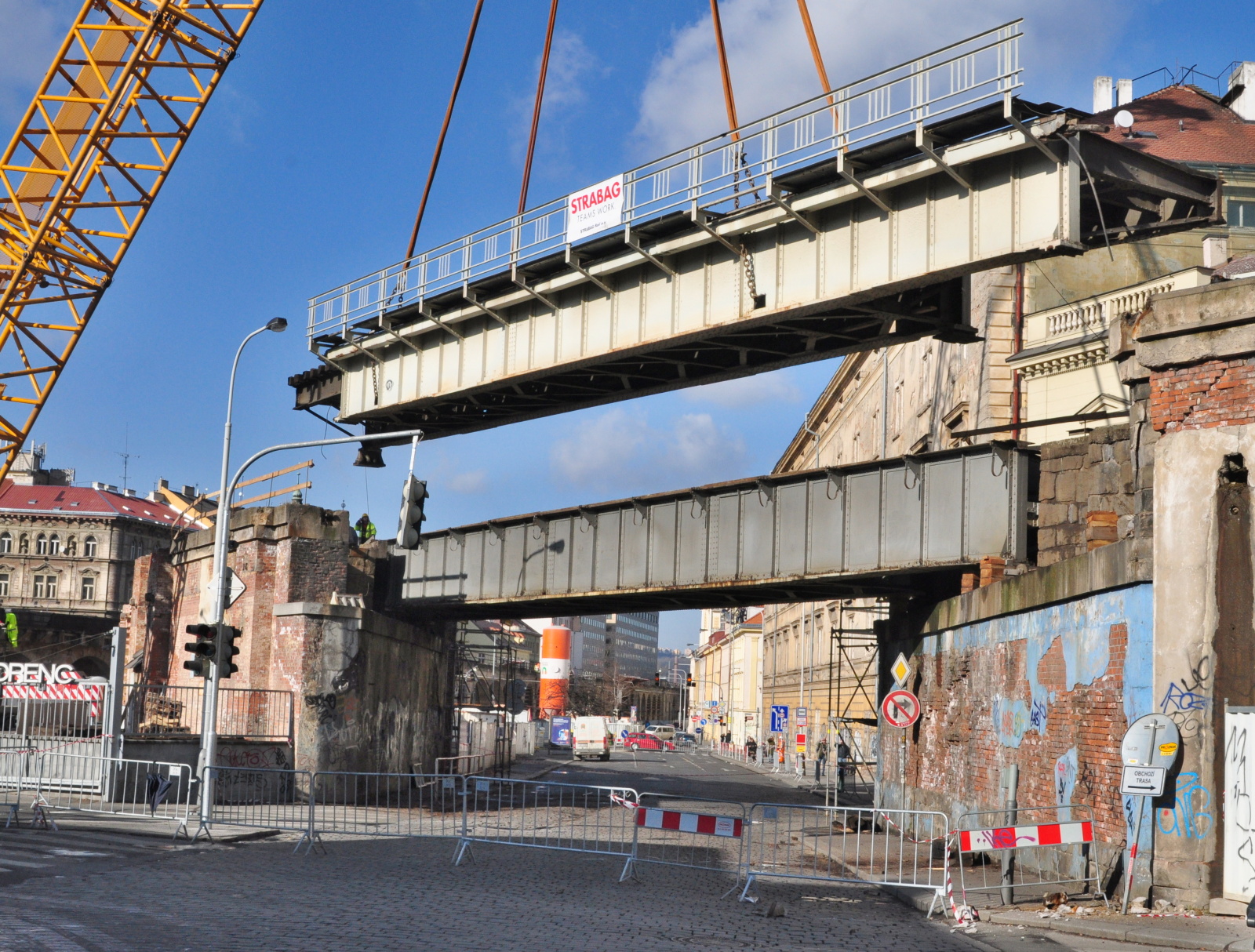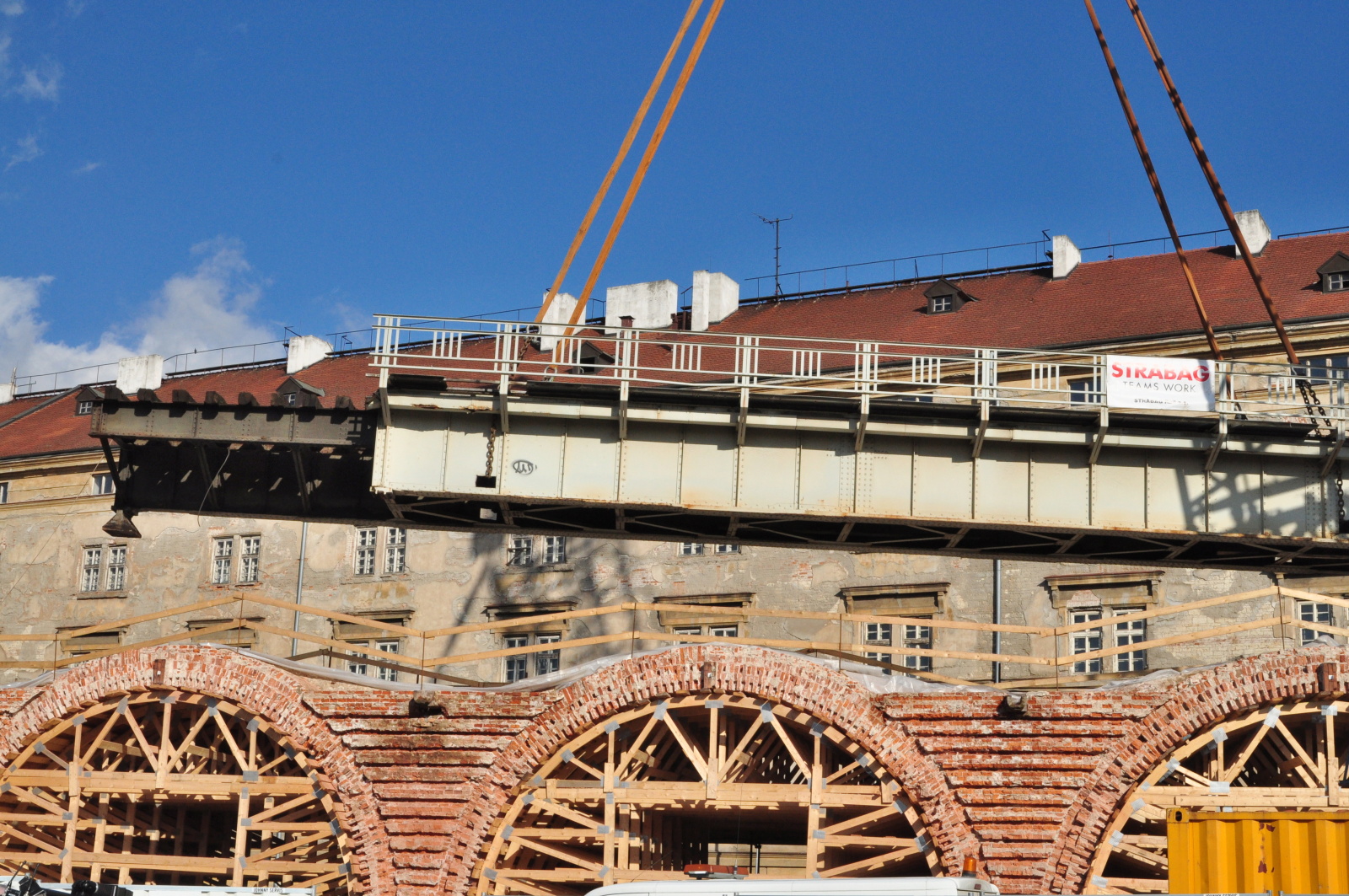Taking Down Two Bridges Keeps Negrelli Viaduct Modernization Running
14.02.2018
The reconstruction of Negrelli Viaduct in Prague centre is entering its next stage. In the following days, the steel bridge over Prvního Pluku Street will be taken down to be replaced by a new reinforced concrete structure with steel beams. In a few weeks, the bridge over Křižíkova Street will be taken down as well. Upon the completion of works on the relocation of departing vehicles parking slots, main construction works in the area of Autobusové nádraží Florenc (Florenc Bus Station - FBS) will start as well.
The bridge over Prvního Pluku Street comes from 1936, its bottom structure is an original one going back to 1872. The steel structure underwent partial reconstruction in 1996 by strengthening it under the right-sided track. The current bridge does not meet the requirements in terms of technical and operational parameters anymore and the noise generated by trains operated thereon is unsatisfactory as well. The new steel supporting structure will bear one track to include a truss bridge equipped by a through bridge deck and a parabolic upper belt.
The bridge will be taken down by crane into the FBS parking slots to be cut up there to smaller units. Subsequently, work on abutments will take place with them being eliminated partly, with abutments shafts grouting and subsoil jet grouting taking place as well. A new steel construction's production should take place in parallel to this work. The new bridge approximate assembling date is not even set yet.
Work was undertaken last year primarily on various installed components' and extensions' removal, taking down railway superstructure and the contact line. A construction cleansing to allow viaduct detailed diagnostics was carried out and foundations were supported by mean of jet grouting pillars at the same time. Each pillar was strengthened as well. Upon these necessary steps, backfill material both above and between the arches was extracted.
"Work shall begin gradually on rehabilitation of particular arches to include local changes of degraded masonry elements with a whole arch going to be re-bricked in case of large extent of damage occurred and with original material intended to be used to the maximum extent possible. New draining of space between arches and waterproofing insulation to copy the shape of arches will be carried out upon repairs of particular arches. The space between arches will be filled in by pervious concrete and a newly created flat surface will be laid down by a new reinforced steel support plate to hold additional structures," Mr. Ondřej Göpfert, Deputy Director of SŽDC Civil Engineering Administration West was quoted as saying.
"The contractor observes the scheduled timetable. There is no indication of a completion's postponement of the whole Negrelli Viaduct, January 2020 is a valid date," Mr. Mojmír Nejezchleb, SŽDC Deputy Director General for Infrastructure Modernization was quoted as saying. The Negrelli Viaduct reconstruction costs will amount to more than 1.4 billion CZK with the contractor being a Consortium of HOCHTIEF CZ, STRABAG Rail and AVERS companies.
In the context of Negrelli Viaduct reconstruction, an extensive diagnostics inspection of all bridge structures (arches) of this historic building takes place. The contractor, the company AVERS under supervision of the consortium of ČVUT Kloknerův ústav and SG Geotechnika ensures its performance. It includes an inspection of 100 arches in total made of various materials such as concrete, brick, sandstone, granite and various combinations of these materials. Due to an extreme range of diagnostics with all elements of arches being inspected to include roughly 30 to 35,000 partial stones, non-destructive inspection methods apply mainly. They include acoustic tracing, visual inspections, determining the moisture content and non-destructive brick and stone strength testing. Tests are carried out exclusively by an accredited testing laboratory of the Klokner Institute. Currently, approximately 750 samples of sandstone, granite, brick and concrete have been tested.
Files
| Press release to download |





